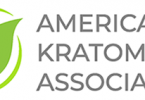https://drive.google.com/file/d/0B2KTsxJSCnTyeUthNG40OG9uOUE/view?pref=2&pli=1
Total Synthesis of (-)-Mitragynine and Analogues
Master Thesis
by
Isabel Kerschgens
June 2012
Abstract
Mitragynine, paynantheine and speciogynine belong to the group of corynanthe alkaloids, a
large class of biologically active indole alkaloids. Present in the leaves of the Asian plant
Mitragyna speciosa (Rubiaceae) they have been used by Thai and Malaysian natives as a
substitute for opium as well as for their stimulating activity. Besides the use as a drug, the
plant has found application in medicine in the treatment of coughing, diarrhea, muscle pain
and hypertension. Interestingly, mitragynine has a stronger analgesic effect than morphine, so
that it has been suggested as a useful compound in the treatment of opiate addiction in
replacement therapy. About the biological activity of paynantheine and speciogynine there are
very little studies reported.
Three syntheses of mitragynine have been developed, two starting from enantiopure starting
materials and a formal synthesis using organocatalysis. Syntheses of paynantheine and
speciogynine have not been reported so far. Our approach to the three alkaloids proceeds via
an asymmetric Pictet-Spengler reaction catalyzed by organic bifunctional cinchona alkaloids.
This strategy allows fast and highly selective formation of the tetrahydro-β-carboline
skeleton. The second key-step in the synthesis is a Tsuji-Trost allylic alkylation precedented
in earlier work of our group. Based on achiral starting materials, a fast and enantioselective
excess to mitragynine, paynantheine and speciogynine was established. Additionally, our
method allows to design new unnatural derivatives which exhibit improved biological
properties.
Table of Contents
1. Introduction ………………………………………………………………………………………………………. 1
1.1. Mitragyna Speciosa ……………………………………………………………………………………….. 1
1.2. Structure of Mitragynine, Paynantheine and Speciogynine …………………………………. 3
1.3. Biological Activity of (-)-Mitragynine ……………………………………………………………… 3
1.4. Reported Syntheses of (-)-Mitragynine …………………………………………………………….. 4
1.4.1. Synthesis by Takayama et al. …………………………………………………………………….. 5
1.4.2. Synthesis by Cook et al. ……………………………………………………………………………. 6
1.4.3. Synthesis by Ma et al. ………………………………………………………………………………. 9
1.5. Aim and Motivation of the Investigations ……………………………………………………….. 10
2. Synthesis of (-)-Mitragynine, (+)-Paynantheine and (+)-Speciogynine ………………… 11
2.1. Synthetic Strategy and Outline of This Thesis …………………………………………………. 11
2.2. Synthesis of the Components for the Pictet-Spengler Reaction ………………………….. 13
2.2.1. Synthesis of the Tryptamine …………………………………………………………………….. 13
2.2.2. Synthesis of the Aldehyde ……………………………………………………………………….. 14
2.3. Asymmetric Pictet-Spengler Reaction …………………………………………………………….. 15
2.3.1. Use of Binol-Phosphoric Acids as Organocatalysts …………………………………… 17
2.3.2. Use of Bifunctional Cinchona Alkaloids as Organocatalysts ………………………. 20
2.3.3. Optimization of the Thiourea-Catalyzed Pictet-Spengler Reaction ………………. 24
2.3.4. Mechanistic Considerations Towards the Substrate-Catalyst Interaction …….. 26
2.3.5. Necessity of Acid for the Pictet-Spengler Reaction …………………………………….. 29
2.4. Synthesis of the α-Keto-Ester ………………………………………………………………………… 30
2.5. Tsuji-Trost Allylic Alkylation ……………………………………………………………………….. 32
2.6. Final Steps Towards (-)-Mitragynine ……………………………………………………………… 34
2.7. Final Steps Towards (+)-Paynantheine and (+)-Speciogynine ……………………………. 36
3. Conclusion ……………………………………………………………………………………………………….. 39
3.1. Summary …………………………………………………………………………………………………….. 39
3.2. Comparison with Other Syntheses …………………………………………………………………. 40
3.3. Conclusion ………………………………………………………………………………………………….. 41
4. Abbreviations …………………………………………………………………………………………………… 43
5. Experimental ……………………………………………………………………………………………………. 45
6. Acknowledgements …………………………………………………………………………………………… 73
References ………………………………………………………………………………………………………………. 75
ii
1. Introduction
1.1. Mitragyna Speciosa
Mitragyna speciosa is a tree growing in the tropical climate of Thailand and Malaysia
whereas the leaves and extracts are commercially sold under the name ”Kratom”. The plant is
classified as a representative of the family Rubiaceae which is also known as the “coffee
family”. With only 10 species worldwide the genus of Mitragyna is relatively small.[1] Its
popularity is based on its unique biological activity, so that the leaves have been traditionally
consumed by natives of Thailand and Malaysia for over hundred years.
The extract of the plant has dose-dependent effects: a stimulating activity with small doses
while higher amounts lead to euphoric and sedative effects.[1] Therefore, it has been applied as
a substitute for opium by natives and has as well been considered as a helpful agent for
replacement therapy in the western world. The leaves, either fresh or dried, and the resin were
consumed mainly orally to release their relaxing or stimulating activity.[2, 3] Despite the use of
Mitragyna speciosa as a drug, the plant has also found medicinal application in the treatment
of coughing, diarrhea, muscle pain and hypertension.
[4]Figure 1: A picture of Mitragyna speciosa by the Dutch botanist Pieter Korthals[5]
Studies about chronic use of kratom revealed side effects like anorexia, weight loss,
constipation and hyperpigmation of the face.[2, 3][6] Uncontrolled consumption of kratom can
lead quickly to an addictive behavior with abstinence syndromes such as insomnia, lethargy,
myalgia, arthralgia, aggression and myonclonus.[6] In Thailand it has therefore already been
outlawed in 1939 through the “Kratom Act”. Later, countries such as Australia, Malaysia and
Myanmar followed.[7] In the Western World however, the distribution over the internet
proceeds rather uncontrolled.
Responsible for the biological activity of the tree are the compounds which are present in the
leaves or the resin. These compounds (mainly alkaloids) are released during the consumptiona
to exhibit their desired effects. The alkaloid content of the leaves is about 0.5%[8] whereas the
isolation of 44 different compounds has been reported over the last 87 years. The exact
distribution of alkaloids varies depending on the region and each specific plant but
mitragynine is generally obtained as the major constituent. In 2004 Takayama investigated the
distribution of alkaloids with a plant growing on the campus of the Chulalongkorn University
of Bangkok (Scheme 1).[9]
mitragynine 66.2%
paynantheine 8.60%
speciogynine 6.60%
7α-hydroxy-7H-mitragynine 2.00%
speciociliatine 0.80%
other 15.8%
Scheme 1: Alkaloid distribution
Brewing the leaves in hot water and serving them as a tea, chewing the fresh leaves or smoking the resin.
a
2
More than half of the amount of isolated alkaloids turned out to be mitragynine with 66.2%,
followed by paynantheine with 8.6% and speciogynine with 6.6%.
1.2. Structure of Mitragynine, Paynantheine and Speciogynine
The naturally occurring indole alkaloid (-)-mitragynine and its analogues (+)-paynantheine
and (+)-speciogynine belong the class of corynanthe alkaloids. First isolated in 1965 by the
group of Shellard[10] the final structure of mitragynine was confirmed by an X-ray analysis of
the group of Zacharias with a mitragynine hydroiodide salt.[11] The isolation of paynantheine
and speciogynine followed soon.[12, 13] Structurally, they all consist of an aromatic indole
system bearing a methoxy-group at the 4-position. In addition to that, there are two six-
membered rings both sharing nitrogen-4 and carbon-3. In total there are three stereocenters.
Mitragynine and speciogynine only differ in the configuration of stereocenter C-20, so that
both molecules are diastereomers of each other. Paynantheine and speciogynine have the
same configuration at C-20 but paynantheine is bearing a vinyl-group at this position instead
of an ethyl-group.
Figure 2: Structures of (-)-mitragynine, (+)-speciogynine and (+)-paynantheine
1.3. Biological Activity of (-)-Mitragynine
Although there are studies which deal with metabolism of paynantheine and speciogynine[14,
15] concrete studies on the biological activity are not reported so far. On the other hand, main
alkaloid mitragynine has been investigated in more detail. In vivo and in vitro studies
indicated that mitragynine is a central nervous system stimulant[3, 16] and primarily acts on μ-
opioid receptors.[17, 18]





